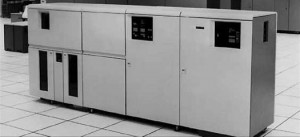 Gary Starkweather created the first laser printer at Xerox in 1971. The first commercial laser printer was the IBM 3800 released in 1976 and is shown here. It was a large affair that often took up alot of space, but offered high volume printing. The Xerox Star 8010 was introduced in 1977 for use with an individual computer, but it was incredibly expensive.
Gary Starkweather created the first laser printer at Xerox in 1971. The first commercial laser printer was the IBM 3800 released in 1976 and is shown here. It was a large affair that often took up alot of space, but offered high volume printing. The Xerox Star 8010 was introduced in 1977 for use with an individual computer, but it was incredibly expensive.
With the spread of personal computers in the 80s, HP introduced the Laserjet 8ppm in 1984, followed quickly by many others. The laser printer helped bring about the era of desktop publishing with the debut of the Apple Laserwriter for the Macintosh and Aldus Pagemaker in 1985.


